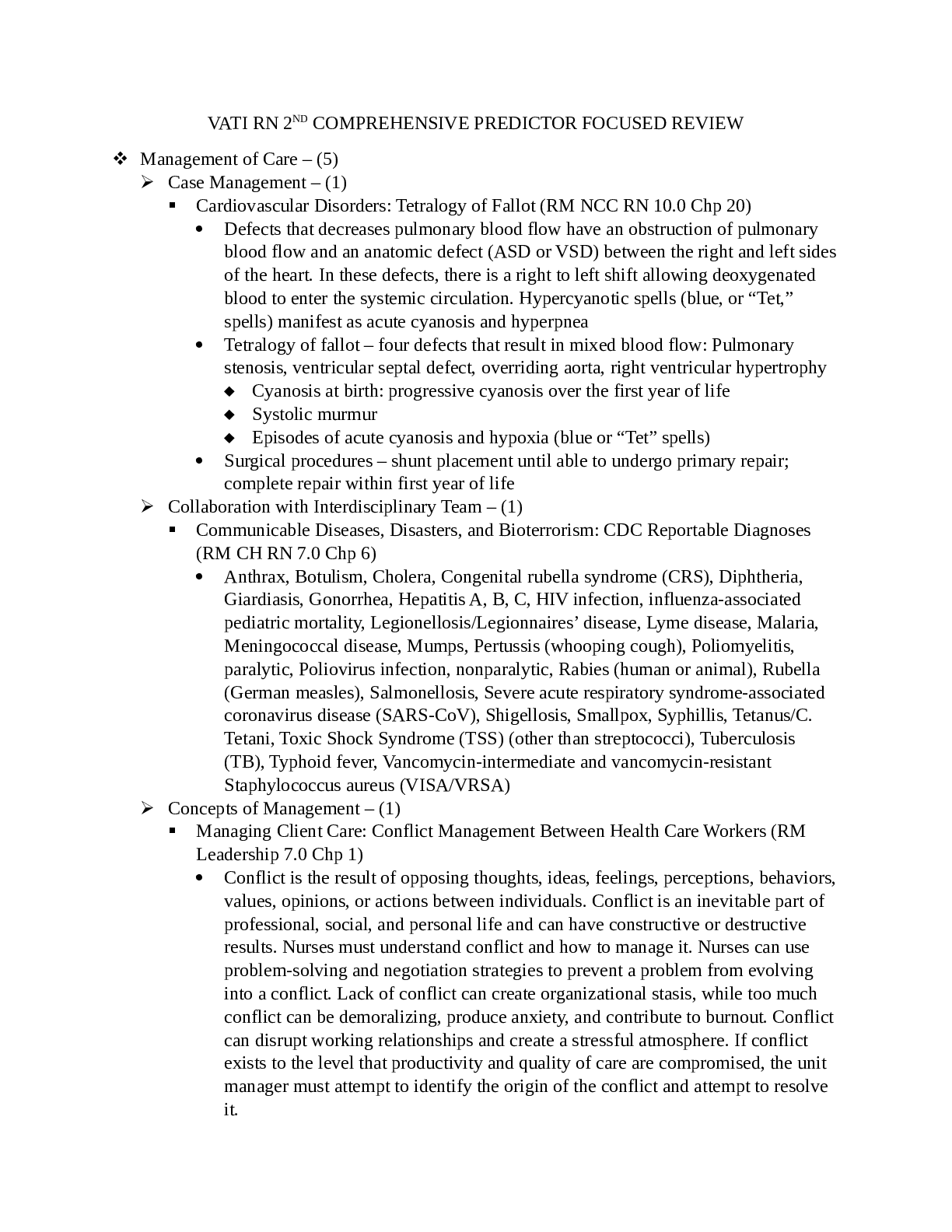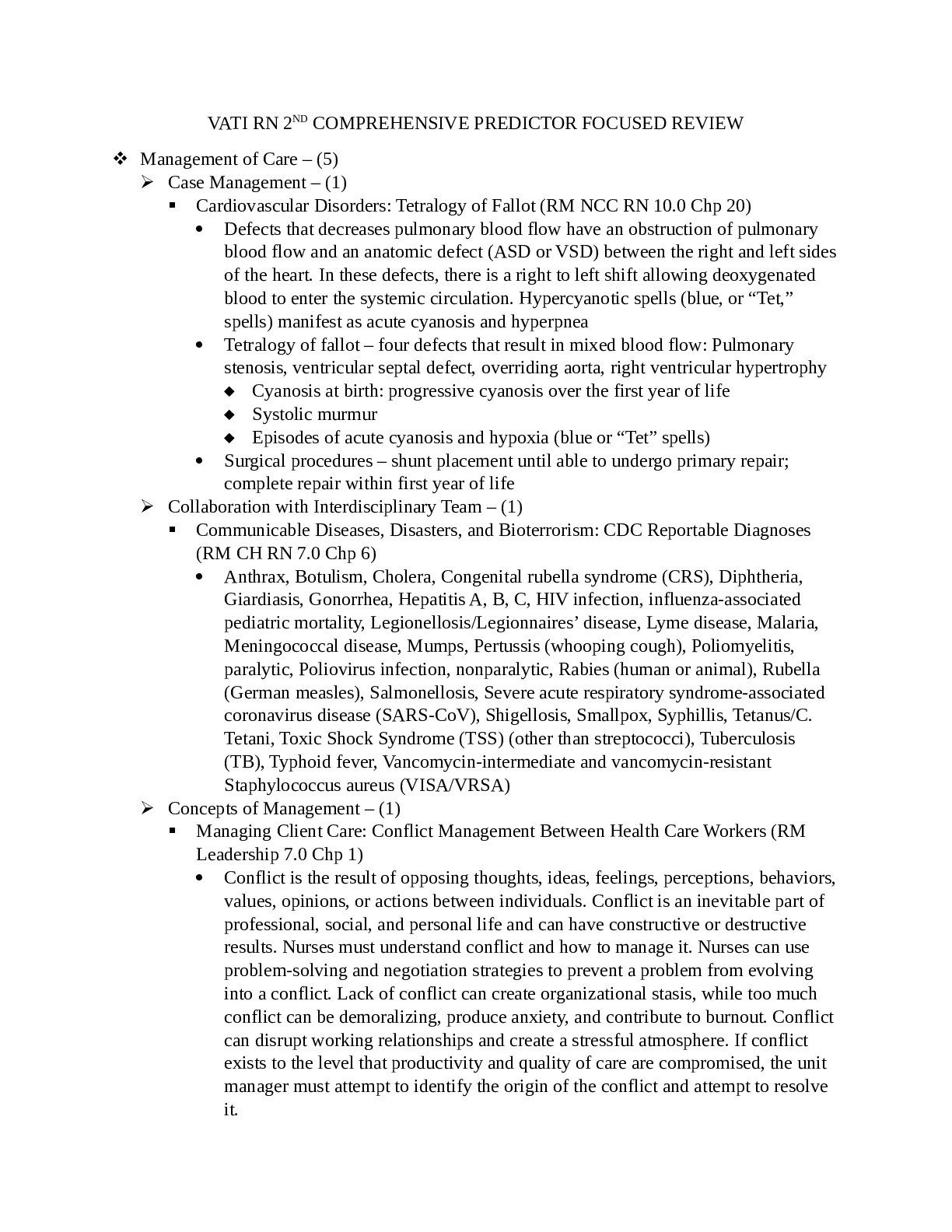Managementof Care – (5)
Case Management – (1)
Cardiovascular Disorders: Tetralogy of Fallot (RM NCC RN 10.0 Chp 20)
Defects that decreases pulmonary blood flow have an obstruction of pulmonary
blood flow and an anatomic defect (ASD or VSD) between the right and left sides
of the heart. In these defects, there is a right to left shift allowing deoxygenated
blood to enter the systemic circulation. Hypercyanotic spells (blue, or “Tet,”
spells) manifest as acute cyanosis and hyperpnea
Tetralogy of fallot – four defects that result in mixed blood flow: Pulmonary
stenosis, ventricular septal defect, overriding aorta, right ventricular hypertrophy
Cyanosis at birth: progressive cyanosis over the first year of life
Systolic murmur
Episodes of acute cyanosis and hypoxia (blue or “Tet” spells)
Surgical procedures – shunt placement until able to undergo primary repair;
complete repair within first year of life
Collaboration with Interdisciplinary Team – (1)
Communicable Diseases, Disasters, and Bioterrorism: CDC Reportable Diagnoses
(RM CH RN 7.0 Chp 6)
Anthrax, Botulism, Cholera, Congenital rubella syndrome (CRS), Diphtheria,
Giardiasis, Gonorrhea, Hepatitis A, B, C, HIV infection, influenza-associated
pediatric mortality, Legionellosis/Legionnaires’ disease, Lyme disease, Malaria,
Meningococcal disease, Mumps, Pertussis (whooping cough), Poliomyelitis,
paralytic, Poliovirus infection, nonparalytic, Rabies (human or animal), Rubella
(German measles), Salmonellosis, Severe acute respiratory syndrome-associated
coronavirus disease (SARS-CoV), Shigellosis, Smallpox, Syphillis, Tetanus/C.
Tetani, Toxic Shock Syndrome (TSS) (other than streptococci), Tuberculosis
(TB), Typhoid fever, Vancomycin-intermediate and vancomycin-resistant
Staphylococcus aureus (VISA/VRSA)
Concepts of Management – (1)
Managing Client Care: Conflict Management Between Health Care Workers (RM
Leadership 7.0 Chp 1)
Conflict is the result of opposing thoughts, ideas, feelings, perceptions, behaviors,
values, opinions, or actions between individuals. Conflict is an inevitable part of
professional, social, and personal life and can have constructive or destructive
results. Nurses must understand conflict and how to manage it. Nurses can use
problem-solving and negotiation strategies to prevent a problem from evolving
into a conflict. Lack of conflict can create organizational stasis, while too much
conflict can be demoralizing, produce anxiety, and contribute to burnout. Conflict
can disrupt working relationships and create a stressful atmosphere. If conflict
exists to the level that productivity and quality of care are compromised, the unit
manager must attempt to identify the origin of the conflict and attempt to resolve
it.
Read More


